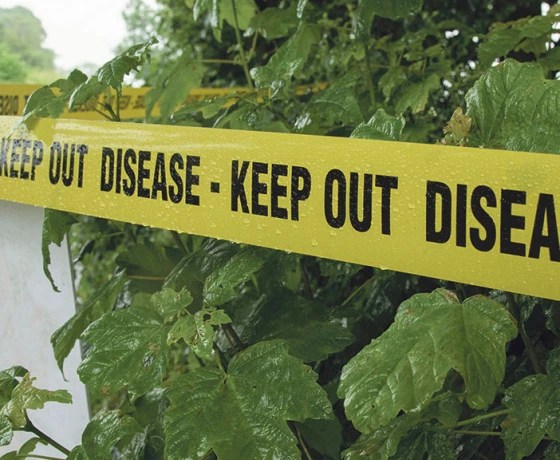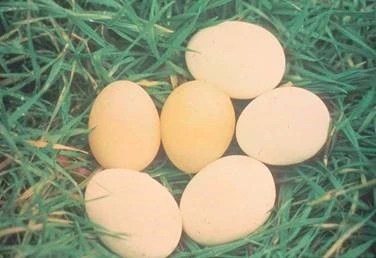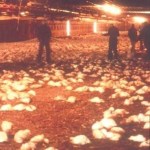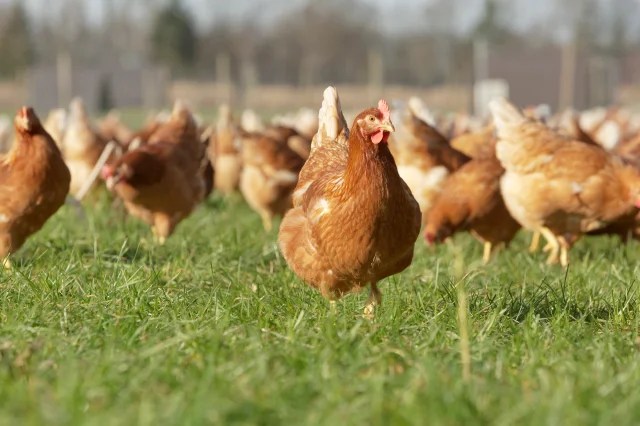Rabies in a postpandemic world: resilient reservoirs, redoubtable riposte, recurrent roadblocks, and resolute recidivism Rupprecht, C.E., Mshelbwala, P.P., Reeves, R.G., Kuzmin, I.V. 2023 Animal Diseases, 3(1), art. no. 15.
Rabies


Avian influenza is a notifiable viral disease that significantly impacts poultry health and welfare, farmer livelihoods, and trade. Biosecurity and management pose a huge challenge due to the wild bird reservoir and in cases of epidemics.
SHARE
Avian Influenza (AI)
This disease is prevalent in many parts of the world. Find out where the latest reported outbreaks are with this map.

KEY FACTS

Disease Classification
Avian influenza is caused by a virus belonging to the Type A influenza virus. There are many strains of avian influenza and these are grouped into low pathogenic avian influenza (LPAI) and high pathogenic avian influenza (HPAI). LPAI strains may circulate naturally in many wild bird populations, however the virus is capable of mutating into forms that are highly pathogenic. In addition, some avian influenza viruses may infect people and in recent years there has been concern about the potential for a new pandemic in the human population, e.g. HPAI H5N1.

Transmission
The avian influenza virus may spread from infected birds by direct contact, and faeces, feed and water all being potential means for the virus to spread. Wild birds may be a source for commercial poultry of highly pathogenic forms of the virus. Whilst the spread of avian influenza to people is considered rare, this can happen through direct contact with poultry, contact with contaminated surfaces, or inhalation/ingestion of virus.

Vaccine
Vaccines against avian influenza are available for poultry, including chickens, turkeys and ducks. These may be used in the face of an outbreak or routinely in endemic areas. Consideration must be given to the possible impact of control measures on trade.
Clinical Signs
As there are different types of the avian influenza virus, so the clinical presentation of the disease may vary. LPAI is associated with few or no clinical signs whereas HPAI is highly contagious and can cause severe clinical signs and high mortality. Clinical signs in poultry may range from mild respiratory signs, reduced egg production and immunosuppression with LPAI, to severe respiratory signs, sudden drop in egg production and up to 100% mortality with HPAI. Other signs may be seen.

EFFECTIVE BIOSECURITY MEASURES ARE ESSENTIAL FOR POULTRY FARMS AND OWNERS OF DOMESTIC BIRDS

THE DISEASE CAN PRESENT IN DIFFERENT WAYS BUT REDUCED EGG PRODUCTION IS SEEN IN BOTH LPAI AND HPAI

HPAI IS HIGHLY CONTAGIOUS AND CAUSES SEVERE CLINICAL SIGNS AND HIGH MORTALITY
Treatment
Treatment is not an option given the rapid spread and high mortality of HPAI. Preventive measures must be taken to reduce the impact of this disease.
Management
The World Health Organization (WHO) and World Organisation for Animal Health (OIE) work together on international coordination of the control of avian influenza. This includes science-based international guidelines and recommendations, as well as monitoring via the network of reference laboratories. Effective surveillance, including wild birds, is important to increase early disease detection. As with many other diseases, prevention is important, and effective biosecurity measures are essential for poultry farms and owners of domestic birds. These focus on keeping the virus out of contact with poultry, and includes good cleaning and disinfection, barriers to prevent contact with wild birds, and controlling the access of people to poultry buildings. In the event of HPAI outbreaks stamping out is a standard tool to eradicate the virus in many areas, whilst vaccination may also be an option.

FOCUS ON…
Focus On… Avian Influenza – a unique challenge
Influenza viruses occur naturally in many wild birds and, periodically, some of these ‘spill over’ into poultry, pigs, and humans. The winter of 2016/17 has seen widespread occurrence of a…
Latest Articles and Events
Knowledge Hub
Innovating at EuFMD OS22
After so long since the last in-person event, it was wonderful to be able to…
Guide – Australia’s DAFF and CSIRO…
A field guide for veterinarians providing information on emergenc
International Symposium of..
My name is Rachel Herschman and I have been an intern on the..
Website – IVVN – International..
The IVVN is an international community of over 1,600 members working togeth…
Boosting disease control with…
Disease control is about a lot more than simply the right vaccine. Building…
Focus On… African Swine Fever (ASF)…
African swine fever (ASF) is present in more than 50 countries on five continent…
Exploring New Frontiers in Anim...
I’m a final year DPhil student studying at The Pirbright Institute and the..
Website – IVVN – International..
Latest Scientific Papers
Rabies
Foot and Mouth Disease (FMD)
Avian Influenza (AI)
No items to show.
Rabies
Avian Influenza (AI)
Rabies
No items to show.
Subscribe to our free newsletter and stay up to date with all news and events.